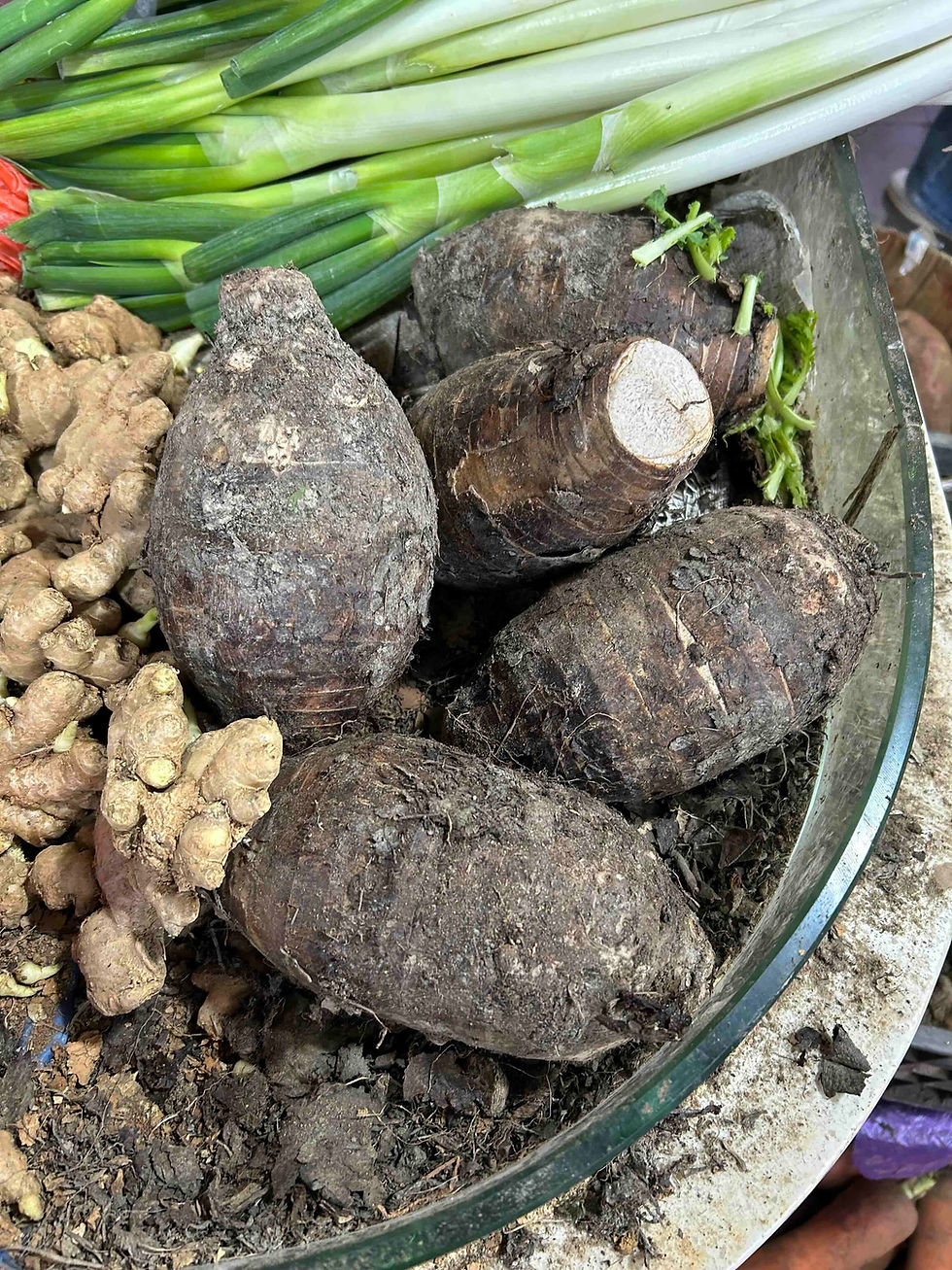An early Chinese account of the papaya
- Rachelle

- Nov 3
- 2 min read
蓬生果,名乳瓜,土人又名木瓜。樹高一二丈,如椶櫚,葉如蒲葵,近頂節節生葉,葉間生瓜,大類木瓜而青色嫩皮微有楞,肉白多脂而無核,搯之乳隨指出,醬食甚脆,子如蠶矢。二月下種,一年即高大,數年果少則伐之另種。其樹去皮可食,如蘿蔔,亦可醬食。余于肇慶見之。
The fruit-grown-in-cluster [i.e. papaya] is known as “milk gourd” and called “wood gourd” by the locals. The tree is one to two zhang [about three to seven metres] in height and looks like a palm tree with leaves like the pan-palm. The leaves grow at intervals close to the top [of the tree], and the gourds grow between the leaves. The gourd is very similar to the Chinese quince but its skin is green and tender with shallow grooves.[1] The flesh is white and rich in fat; there is no stone. If you pinch it, milk will come out at your fingertips. It is eaten with sauce and tastes very crunchy. The seeds look like a silkworm’s droppings. If sown in the second month, the plant will grow tall within a year. If it bears few fruits in a couple of years, cut it down and grow another one. The tree, once peeled, is also edible. It tastes like daikon and can also be eaten with sauce. I saw this in Zhaoqing.[2]
* From Wu Zhenfang 吳震方 (fl. late seventeenth century), Lingnan zaji 嶺南雜記, Congshu jicheng chubian 叢書集成初編 (Beijing: Zhonghua shuju, 1985) edition, 2.54.
[1] With a much longer history in China, the Chinese quince (Chaenomeles speciosa) is a familiar literary image, especially because of the homonymous poem in the Shijing (Book of Songs). The Chinese name of its fruit also reads “wood gourd”. The papaya Wu Zhenfang describes above was introduced into China during the seventeenth century and is also known as the “foreign wood gourd” (fan mugua 番木瓜). The Chinese quince is unpleasant to eat and more valued for its ornamental and symbolic significance, so the papaya that can be enjoyed green and ripe has became the more widely recognised “wood gourd” nowadays.
[2] A city located in the west of present-day Guangdong Province.
Some images of papayas and pickled green papaya slices in Liuzhou










I once lived in Zhaoqing and I am a big fan of pawpaws, as we call papaya in Australia, so loved this post!